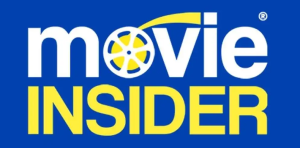Ad Blocker Detected
We use ads to keep this site running, so please consider disabling your ad blocker. Thank you!
Do not know how to disable ad blocker? Check out this article: How to disable ad blocker?
Ford v Ferrari 2019

In the high-stakes world of racing, an unlikely duo joins forces: Carroll Shelby, a visionary car designer, and Ken Miles, a fearless driver. Together, they defy corporate constraints, push technological limits, and confront their own personal struggles to build a revolutionary Ford race car, taking on the legendary Ferrari at the iconic 1966 Le Mans.
Does Ford v Ferrari have end credit scenes?
No!
Ford v Ferrari does not have end credit scenes.
Actors
Meet the cast of Ford v Ferrari and learn about the talented actors who brought the characters to life. Explore their roles and career highlights.

Matt Damon
Carroll Shelby

Christian Bale
Ken Miles

Jenelle McKee

Roberta Sparta

Noah Jupe
Peter Miles

Jon Bernthal
Lee Iacocca

Tracy Letts
Henry Ford II

Josh Lucas
Leo Beebe

JJ Feild
Roy Lunn

Caitriona Balfe

Wallace Langham

Stefania Spampinato

Adam Mayfield

Dallas Chandler

Ian Harding
Ford Executive - Ian

Jonathan LaPaglia

Remo Girone
Enzo Ferrari

Wyatt Nash
Links
Explore where to watch Ford v Ferrari online. Find reviews, ratings, and detailed movie information on other platforms like Metacritic, Rotten Tomatoes, Media Stinger or TMDb
Ratings
Discover how Ford v Ferrari is rated on popular platforms like IMDb, Metacritic, and TMDb. Explore audience and critic scores to see how this movie ranks among the best.

81
Metascore
8.3
User Score


92%
TOMATOMETER

98%
User Score

80
%
User Score

4.0
From 8.7K fan ratings

4.75/5
From 73 fan ratings
Movie Quiz
Challenge your knowledge of Ford v Ferrari with an engaging quiz. Test your memory of the movie’s characters, plot twists, and unforgettable moments.
Ford v Ferrari Quiz: Test your knowledge on the thrilling story of ambition, rivalry, and speed in 'Ford v Ferrari'.
Who proposed the plan to acquire Ferrari?
Awards
Discover the awards and nominations received by Ford v Ferrari. Explore the history of Ford v Ferrari and its cast and crew.
Film Editing
Best Picture
Sound Editing
Sound Mixing
Best Picture
Best Action Movie
Best Visual Effects

Outstanding Performance by a Stunt Ensemble in a Motion Picture

Plot Summary
Get the full story of Ford v Ferrari with a detailed plot summary. Dive into its themes, characters, and the twists that make it a must-watch.
In a time of upheaval for the Ford Motor Company, Lee Iacocca proposed an ambitious strategy to Henry Ford II: acquire Ferrari, the reigning champion of endurance racing, to elevate Ford’s own car sales. Yet, Enzo Ferrari proved unyielding, leveraging Ford’s offer to broker a deal with Fiat, which allowed him to maintain control over his beloved Scuderia Ferrari team. This affront ignited a fierce resolve in Henry Ford II to compete with Ferrari on their own turf.
Meanwhile, Iacocca recognized the potential in collaborating with Carroll Shelby, a legendary driver and founder of Shelby American, who famously clinched victory at the 24 Hours of Le Mans in 1959. Shelby, in turn, called upon his friend Ken Miles, an audacious British racing driver and mechanical engineer known for his candid observations. Together with Iacocca, they gathered at Los Angeles International Airport to develop the Ford GT40 Mk I prototype, dedicated to crafting a vehicle that could rival Ferrari’s supremacy.
As the highly anticipated Ford Mustang debuted, Ken Miles didn’t hold back, delivering a sharp critique that disappointed Leo Beebe, Ford’s senior vice president. Beebe’s subsequent campaign against allowing Miles to represent Ford at Le Mans—viewing him as a potential public relations disaster—led Shelby to make the tough decision to opt for Phil Hill and Bruce McLaren instead. The outcome was predictable; none of the Ford cars finished the race.
Undaunted, Shelby threw himself into perfecting the GT40 Mk I, achieving an astonishing speed of 218 mph (350.8 km/h) on the Mulsanne Straight, albeit it was soon halted by mechanical failure. Noticing this success, Shelby leveraged it to broker an agreement with Henry Ford II: if Miles could secure a win at the 24 Hours of Daytona, he would earn a place at Le Mans; otherwise, Ford would assume full control of Shelby American.
At Daytona International Speedway, Beebe fielded a second GT40 backed by a NASCAR crew, boasting faster pit stops. However, Shelby permitted Miles to push his vehicle beyond the 7,000 RPM redline, leading him to accomplish victory and secure his spot at Le Mans. With the green flag unfurling at Le Mans, Miles encountered a significant challenge as a malfunctioning door affected his speed during the initial lap. The pit crew sprang into action, making critical repairs, allowing Miles to return and shatter lap records, closing in on the formidable Ferraris.
A gripping contest unfolded between Miles and his rival Lorenzo Bandini in their respective GT40 and Ferrari prototype 330 P3, neither willing to concede as they raced on the famed Mulsanne Straight. Yet, fate took a twist when Bandini’s Ferrari suffered mechanical issues, causing him to withdraw from the race. Upon crossing the finish line, Miles found himself in a tense scenario, with Fords holding the top three places. Team owner Beebe urged Shelby to instruct Miles to slow down, facilitating a coordinated finish for the press. Shelby chose not to enforce Beebe’s request, leaving the choice to Miles, who initially resisted the idea of letting off the throttle, preferring to maintain his furious speed.
Ultimately, Miles made a surprising decision to abide by Beebe’s wishes. Although McLaren crossed the finish line first, after completing more miles despite starting behind Miles, Shelby’s driver was granted second place. This event stirred controversy, with Shelby accusing Beebe of intentionally undermining Miles’ chance of victory.
Philosophically, Miles accepted the outcome, reminding Shelby that he had been promised a drive, not a guaranteed win. As they left the track, an unexpected show of sportsmanship from Enzo Ferrari added an unexpected touch of grace to the tournament. Tragically, months later, a mechanical fault took Miles’ life during testing at Riverside International Raceway.
In the wake of his death, Shelby paid a heartfelt visit to Miles’ widow Mollie and their son Peter, gifting the young boy a wrench once thrown at him by Miles during an argument. This poignant moment served as a striking reminder of the camaraderie woven tightly into the fabric of racing.
In honoring Miles’ lasting impact on the sport, Ford achieved remarkable victories at Le Mans in 1967, 1968, and 1969, while Miles was posthumously inducted into the Motorsports Hall of Fame of America in 2001.
Videos
See the latest videos related to Ford v Ferrari. Explore trailers, interviews, and behind-the-scenes content that give you a deeper look into the film.
Featured on this page

What's After the Movie?
Not sure whether to stay after the credits? Find out!
Check out our other apps:
Actors
Companies
Latest Movies
© 2025 What's After the Movie. All rights reserved.
















